If the idea of having a tattoo keeps lingering inside your head, but you want to play it safe before deciding to have it permanently inked on your body; henna is the perfect substitute for you.
This can be a good choice for anyone who likes to experience the beauty of Indian culture. Henna (or mehndi) comes in a variety of shades, designs, and sizes. However, the peacock henna tattoo has always been the go-to design as it is a paramount cultural symbol of many religions.
What is a henna tattoo?
Let’s dive into something truly magical, a body art tradition that’s been captivating hearts (and hands!) for centuries: Mehndi! While you might know it as “henna” in the West, this incredible art form is so much more than just a temporary tattoo.
It’s a vibrant, living representation of beauty, celebration, and deep-rooted culture, especially beloved in the lively lands of South Asia, with India leading the way in its dazzling display. For hundreds of years, Mehndi has been painting stories and traditions onto skin.
#1 Peacock Paradise Mehndi
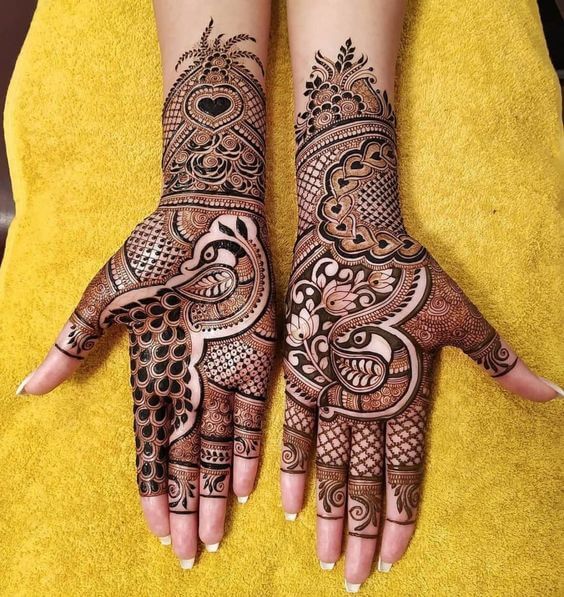 Source: unknown
Source: unknown
#2 Royal Henna Steps
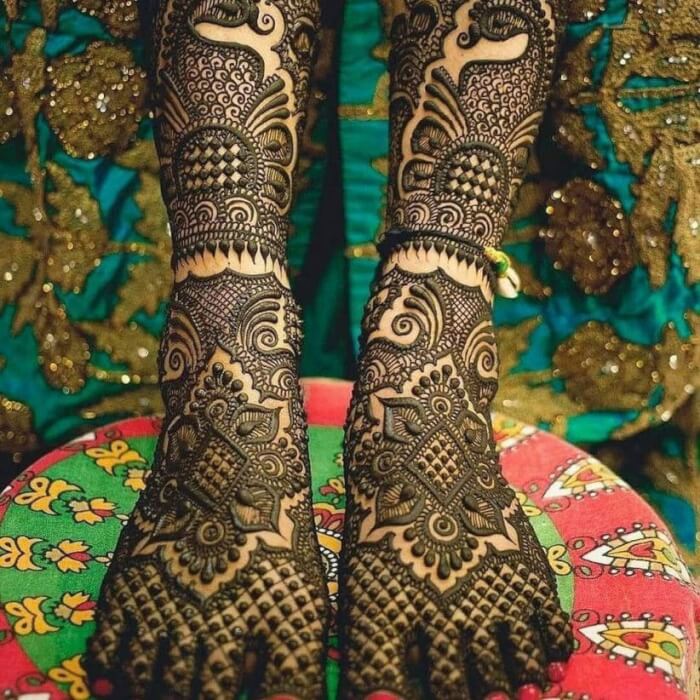 Source: unknown
Source: unknown
#3 Sculpted Peacock Dream
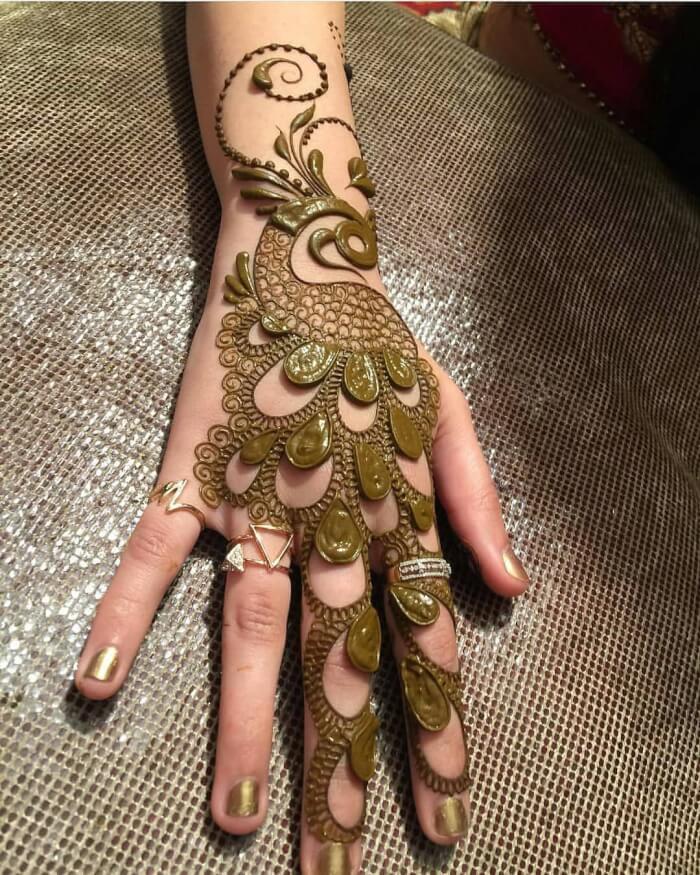 Source: unknown
Source: unknown
Where does this mystical pigment come from? It’s all thanks to the humble henna plant! Imagine its leaves, patiently left to dry out under the sun, then lovingly ground into a super-fine powder.
This is the magical dust that, when mixed with a secret blend of other natural ingredients, transforms into that smooth, wet paste. This paste is then carefully squeezed through a cone to create the most intricate, jaw-dropping designs that swirl and flow across hands and feet.
#4 Full Sleeve Henna Flair
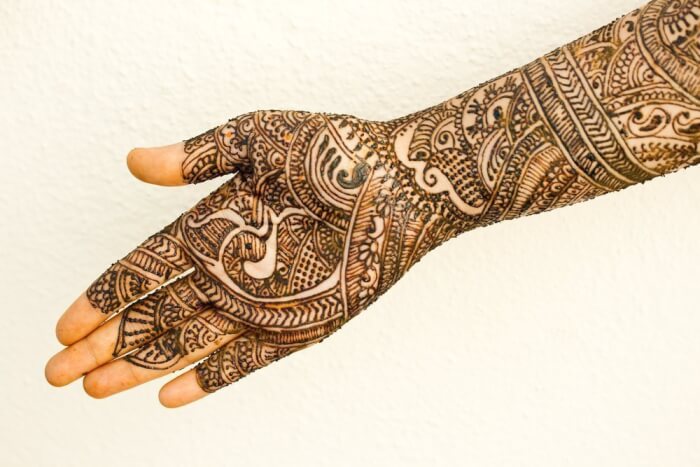 Source: unknown
Source: unknown
#5 Enchanted Garden Mehndi
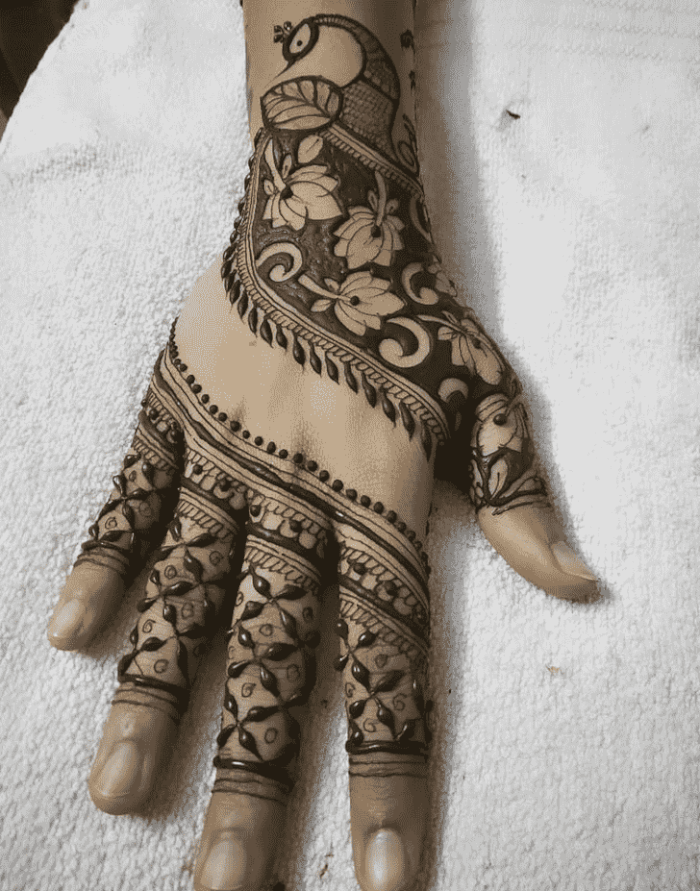 Source: unknown
Source: unknown
Generally, henna is only applied on special occasions such as weddings and festivals by both men and women. In particular, during Hindu festivals, Indian ladies prefer to wear their temporary tattoos on their palms, backs of their hands, or feet.
The reason is that these are usually spots that contain less pigment melanin. As a result, they are usually brighter than any other parts of the body, which helps these tattoos stand out even more.
Conversely, men like to show it on their arms, legs, back, and chest.
#6 Divine Avian Design
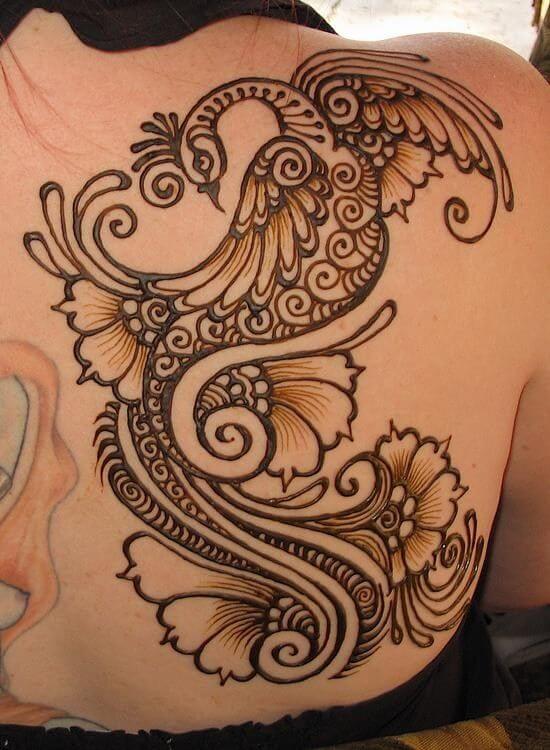 Source: unknown
Source: unknown
#7 Boho Bird Bliss
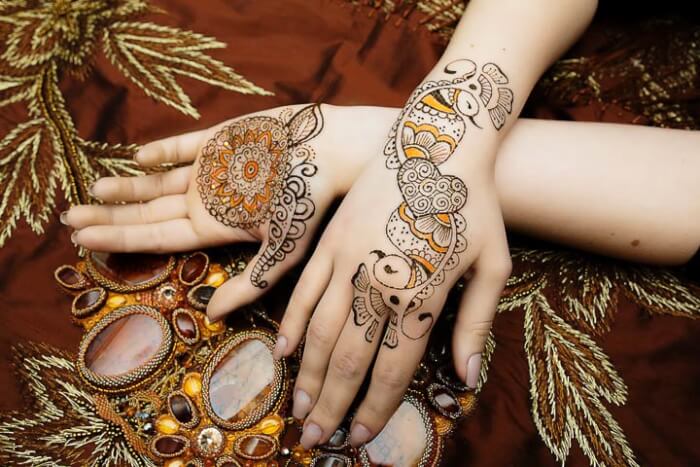 Source: unknown
Source: unknown
#8 Henna Hand Harmony
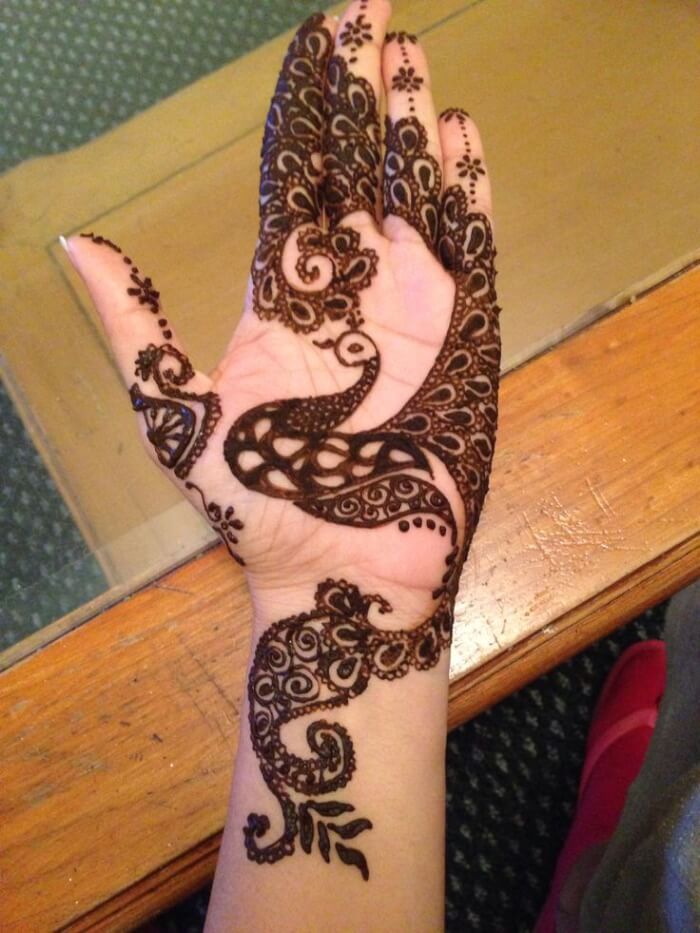 Source: unknown
Source: unknown
From elaborate bridal patterns that tell tales of love and happiness, to simpler, delicate motifs worn for festivals and everyday beauty, Mehndi is pure artistry.
It’s a moment of connection, a splash of joy, and a stunning way to adorn your body with nature’s own beautiful dyes. It’s no wonder this tradition has never faded. It’s simply too beautiful, too meaningful, and too much fun not to adore!
#9 Regal Bloom Backpiece
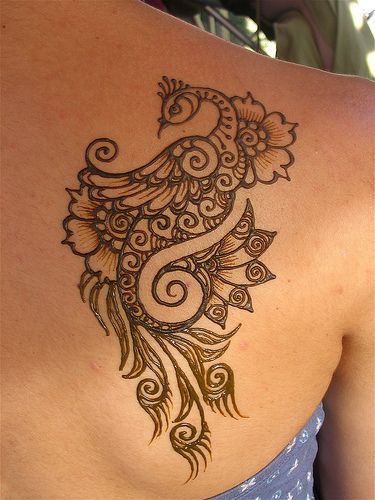 Source: unknown
Source: unknown
#10 Bangle & Bloom Hands
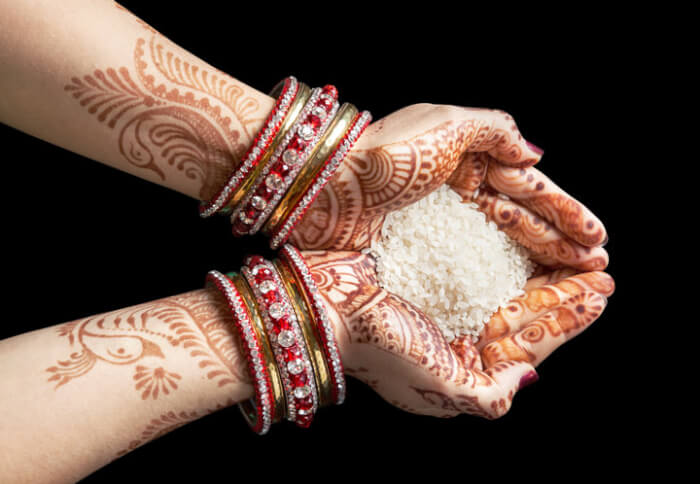 Source: unknown
Source: unknown
#11 Regal Henna Grace
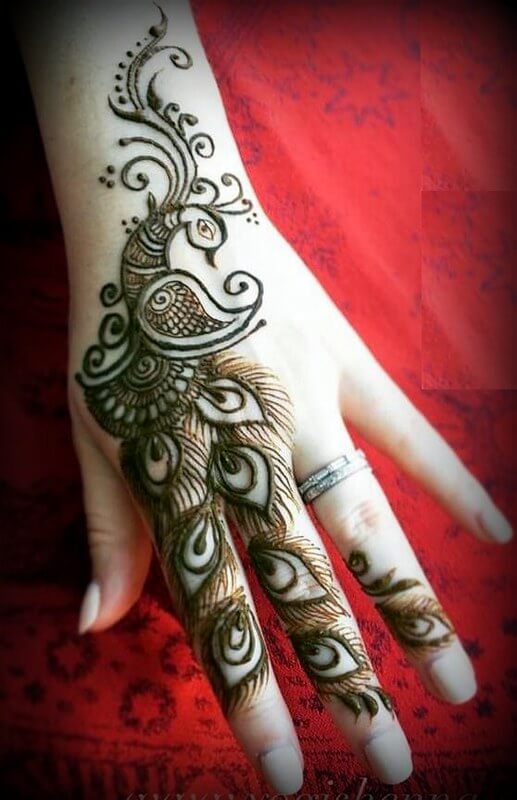 Source: unknown
Source: unknown
#12 Feathered Finger Fun
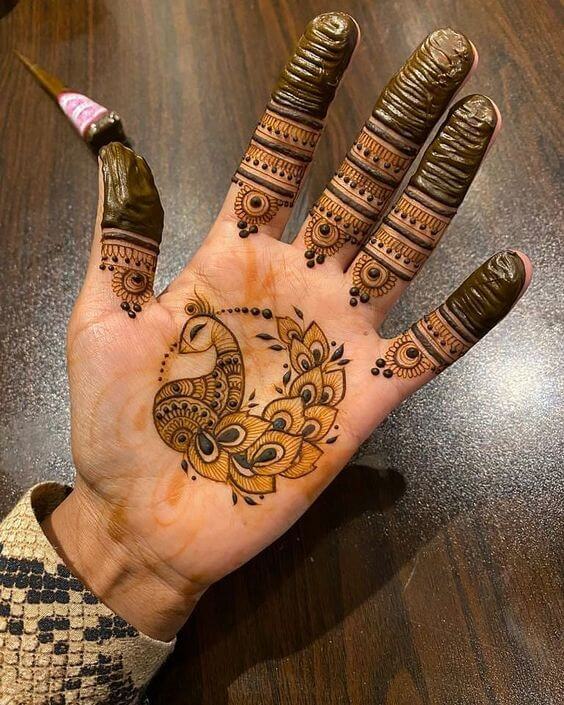 Source: unknown
Source: unknown
Nevertheless, you should remember that mehndi takes hours to dry and to be fully absorbed by the skin. Once it is ready to be taken off, you just need to carefully peel or wipe it off. The stain will remain on your skin for several weeks.
Peacock Mehndi—temporary but still meaningful
It’s truly an understatement to say the peacock is simply the “king of birds”, it’s so much more! With its majestic appearance and captivating personality, this magnificent creature has inspired countless cultural narratives and symbols across the globe.
In Hinduism, peacocks hold a sacred place, believed to be the living embodiment of Lakshmi, the revered goddess of fortune, beauty, and prosperity. Their vibrant presence symbolizes grace and abundance.
#13 Bridal Henna Extravaganza
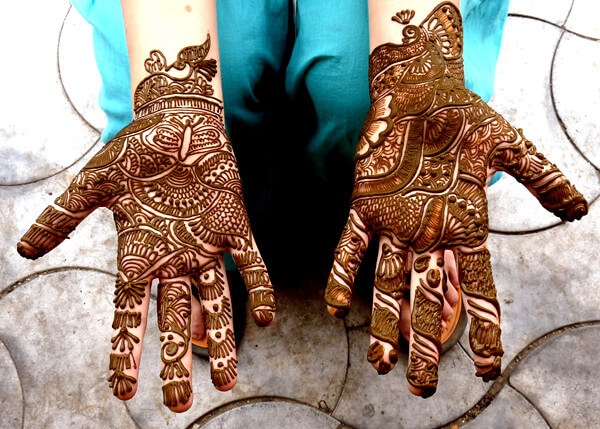 Source: unknown
Source: unknown
#14 Full Arm Festival Flourish
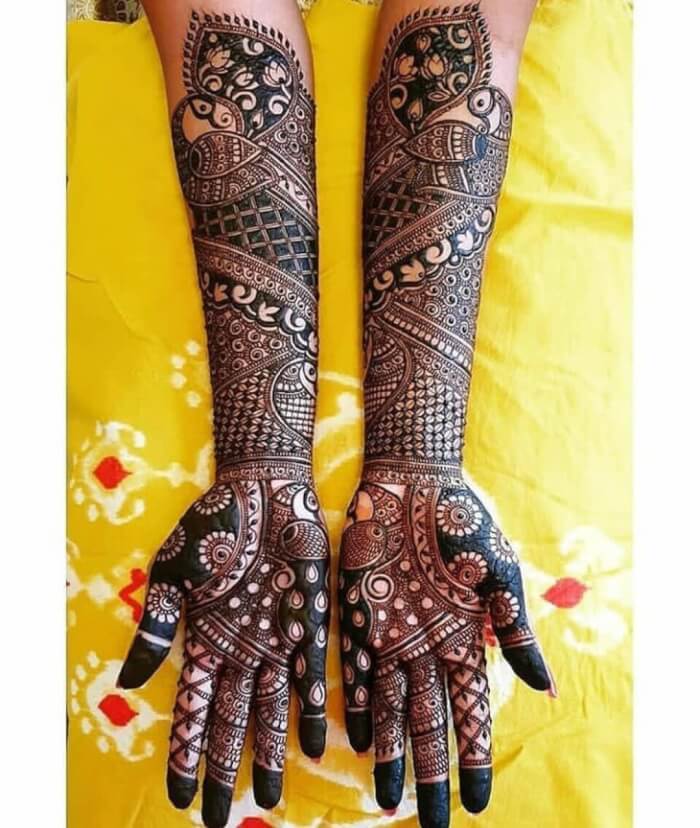 Source: unknown
Source: unknown
#15 Peacock Perch Arm Art
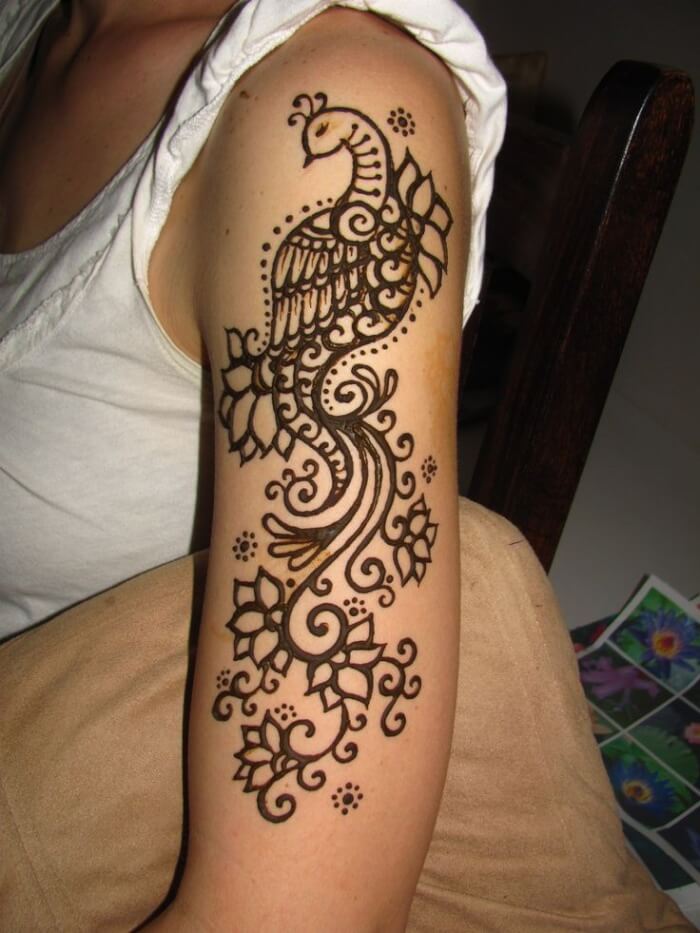 Source: unknown
Source: unknown
#16 Full Sleeve Henna Flair
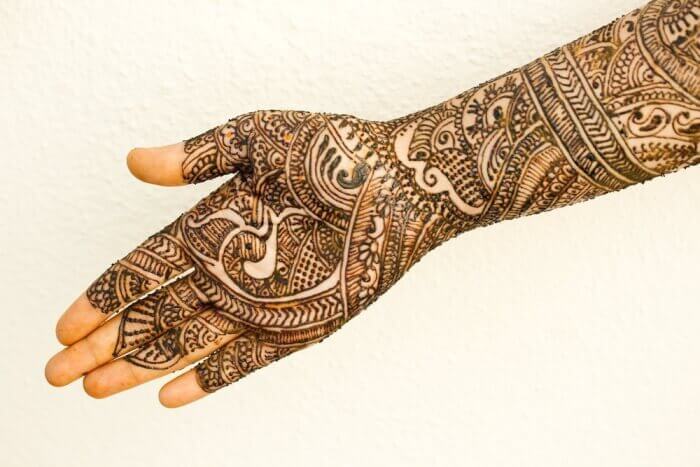 Source: unknown
Source: unknown
Across the Far East, enchanting stories are passed down, particularly concerning Kuan Yin, the beloved goddess of mercy. Legend has it that she sacrificed her immortal life to save humanity, and in her compassion, created the peacock specifically to protect people.
In Persian mythology, these stunning birds are also deeply symbolic, revered as powerful guardians and protectors, embodying vigilance and nobility. The peacock, therefore, stands as a universal emblem of beauty, divine presence, and watchful guardianship.
#17 Enchanted Bloom Henna
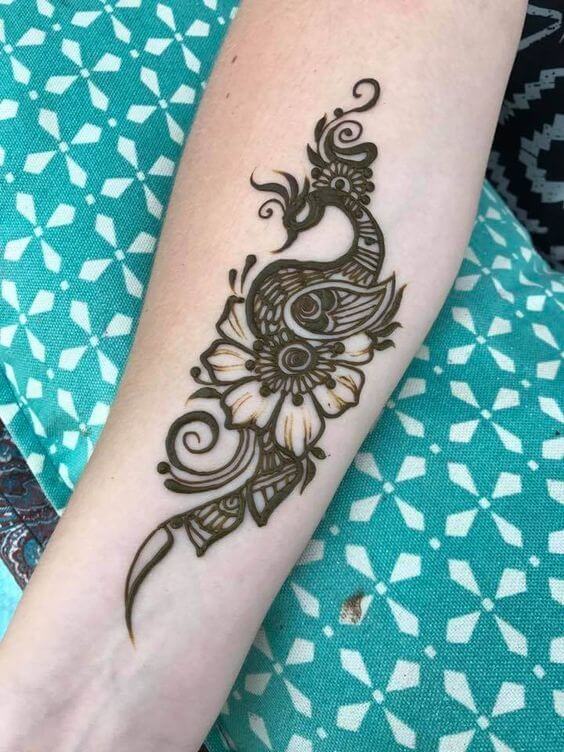 Source: unknown
Source: unknown
#18 Swirling Peacock Centrepiece
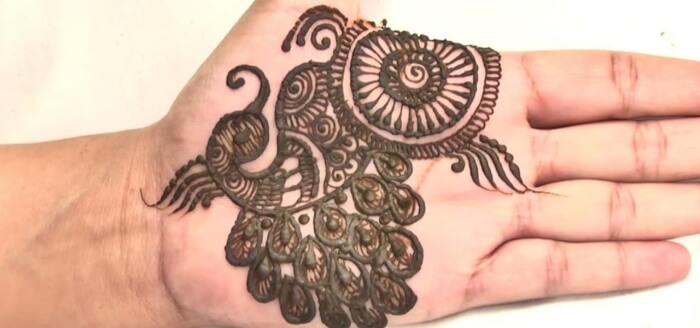 Source: unknown
Source: unknown
Generally, henna is widely used in sacred ceremonies and is believed to bring good luck and prosperity to the wearers. Nonetheless, when it takes the form of a peacock, the henna will represent pride, charm, nobility, beauty, longevity, generosity, compassion, and so on.
#19 Red Toe Regal Art
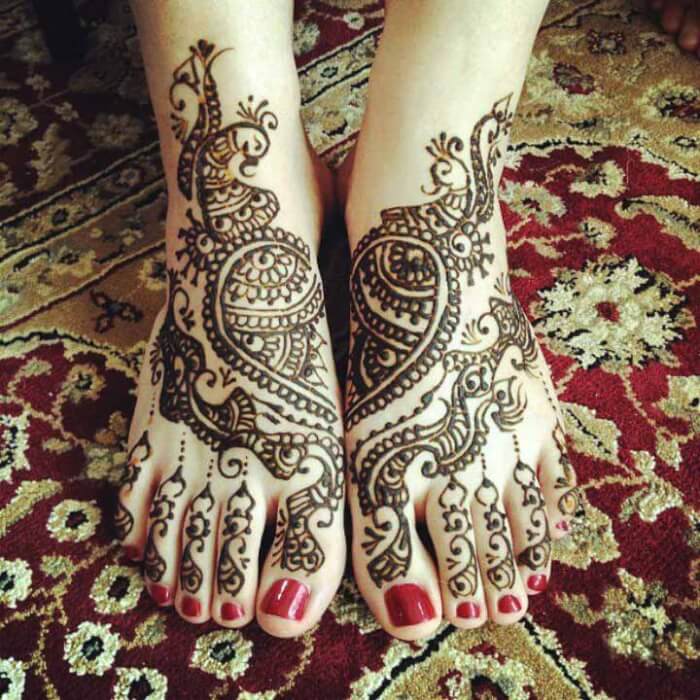 Source: unknown
Source: unknown
#20 Garden Gala Henna
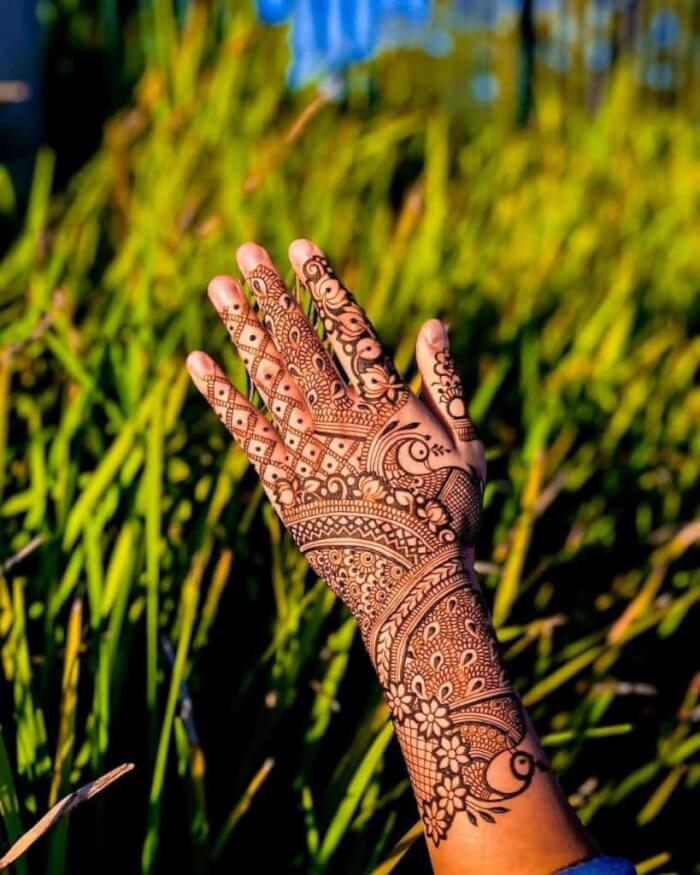 Source: unknown
Source: unknown
#21 Regal Feathered Fantasy
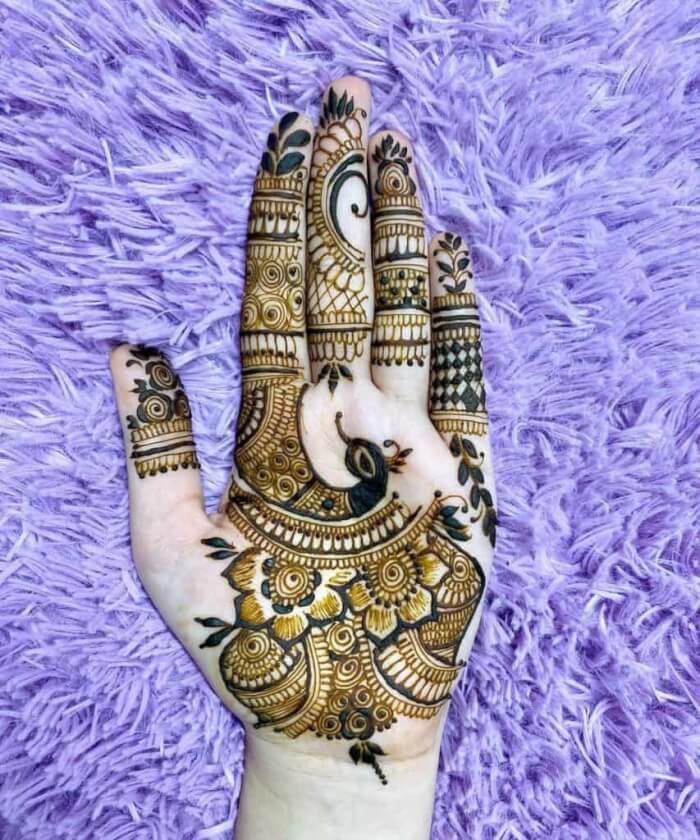 Source: unknown
Source: unknown
If you are looking for a way to do a DIY peacock henna tattoo, you can search for the recipes on Google. However, there is no guarantee that these home-made “tattoo” mixtures will work effectively.
In order to possess a desired and long-lasting mehndi, you should ask for assistance from a professional. Additionally, you can also take a look at the peacock hennas below to achieve your one-of-a-kind design.
#22 Peacock Perch Hand Art
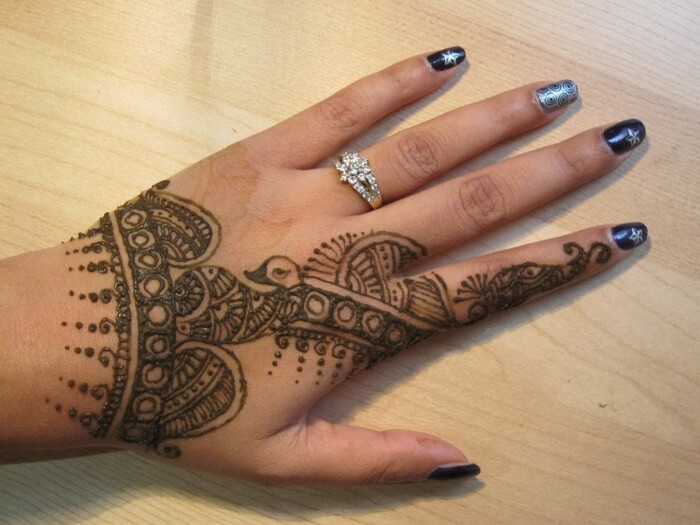 Source: unknown
Source: unknown
